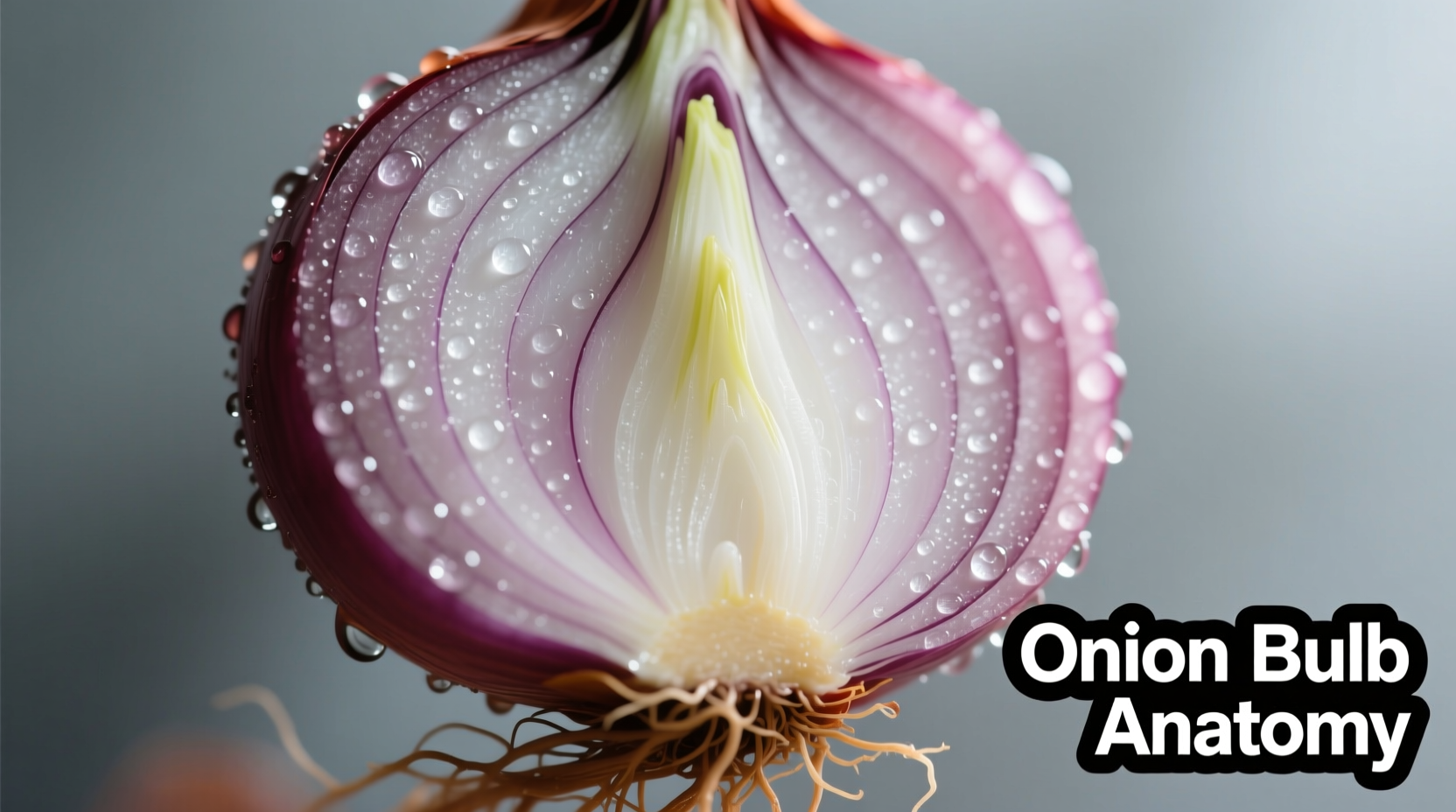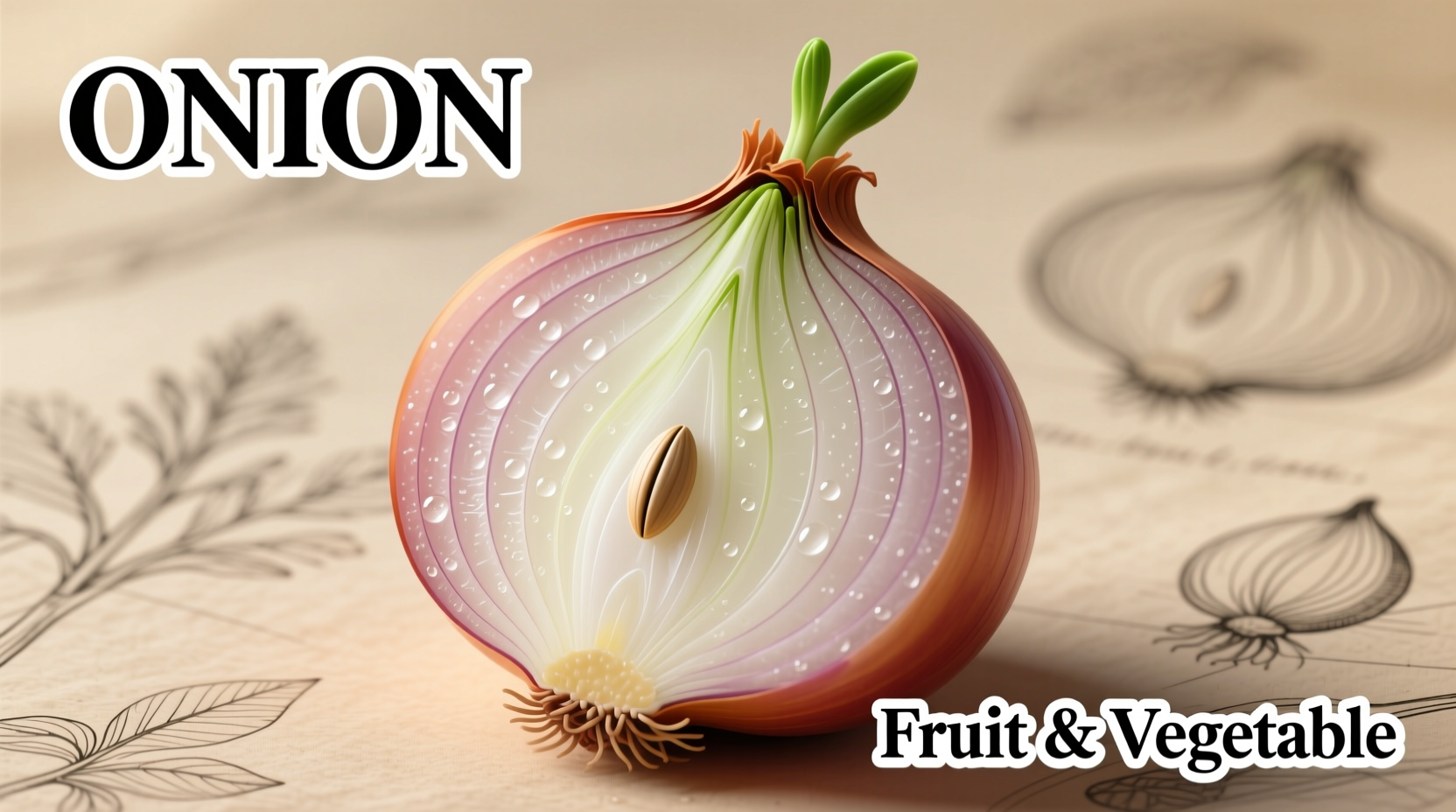Confused about whether onions qualify as fruits or vegetables? You're not alone. This common kitchen ingredient sparks debate among home cooks and gardening enthusiasts alike. Let's cut through the confusion with scientifically accurate information that clarifies exactly where onions fit in our food system.
The Straight Answer: Onion Classification Explained
Unlike fruits, which develop from the flowering part of a plant and contain seeds, onions grow as underground storage organs called bulbs. They're classified as vegetables across all authoritative sources including botanical references, culinary standards, and agricultural guidelines. The confusion often stems from misunderstanding botanical versus culinary classifications.
| Classification Type | Fruit Characteristics | Vegetable Characteristics | Where Onions Fit |
|---|---|---|---|
| Botanical | Develops from flower, contains seeds | Edible plant parts (roots, stems, leaves) | Modified stem (bulb), no seeds in edible portion |
| Culinary | Sweet, often eaten raw or in desserts | Savory, used in main dishes/sides | Savory flavor profile, used in savory dishes |
| Agricultural | Grown on trees/vines/bushes | Grown in fields/gardens as annual crops | Field-grown bulb crop, harvested annually |
Why Onions Aren't Fruits: The Botanical Reality
From a strict botanical perspective, fruits develop from the ovary of a flowering plant and contain seeds. Think apples, tomatoes, or cucumbers—all develop from flowers and house seeds. Onions, however, form as modified underground stems called bulbs. These bulbs store nutrients for the plant's survival through winter, with the actual flower appearing much later on a separate stalk above ground.
The edible portion of an onion consists of fleshy leaf bases surrounding a short stem. When you slice open an onion, you're examining layers of modified leaves, not seed-containing fruit tissue. This fundamental biological distinction places onions firmly in the vegetable category according to the Encyclopedia Britannica's botanical classification system.
Culinary Classification: How Chefs and Cooks View Onions
In the kitchen, the fruit/vegetable distinction operates differently than in botany. Culinary professionals classify ingredients based on flavor profile and usage rather than botanical structure. Onions' savory, pungent characteristics and their role in building flavor foundations for savory dishes align them with vegetables in culinary practice.
The USDA categorizes onions under the vegetable group in dietary guidelines, recommending them as part of daily vegetable intake. This classification affects nutritional labeling, school lunch programs, and agricultural subsidies—all treating onions as vegetables.
Historical Timeline: How Onion Classification Evolved
Understanding how we've classified onions throughout history reveals why confusion exists today:
- Ancient Times: Egyptians cultivated onions as early as 5000 BCE, treating them as vegetables both culinarily and medicinally
- 18th Century: Carl Linnaeus established modern botanical classification, identifying onions as Allium cepa (a vegetable species)
- 19th Century: USDA begins agricultural categorization, listing onions among vegetable crops
- 20th Century: Nutritional science emerges, grouping onions with vegetables in dietary guidelines
- Present Day: Botanical, culinary, and nutritional authorities consistently classify onions as vegetables
Common Misconceptions Clarified
Several factors contribute to the onion classification confusion:
- "But tomatoes are fruits!" - While botanically fruits, tomatoes are culinarily treated as vegetables. Onions don't share this dual classification.
- "Onions grow underground like potatoes" - True, but potatoes are tubers while onions are bulbs—both remain vegetables.
- "Some plants have fruit-like structures" - Onions produce actual flowers and seed pods (which are fruits), but we don't eat those parts.

Practical Implications for Home Cooks and Gardeners
Understanding onion classification matters more than you might think:
- Cooking: Knowing onions are vegetables explains their role in building savory flavor bases rather than providing sweetness like fruits
- Gardening: As bulb vegetables, onions require different planting depths and soil conditions than fruiting plants
- Nutrition: Onions contribute vegetable-based nutrients like quercetin and sulfur compounds, not fruit-based vitamins
- Storage: Vegetable storage guidelines apply (cool, dry conditions) rather than fruit storage methods
When following recipes or gardening instructions, treating onions as vegetables ensures proper usage. The National Gardening Association confirms that bulb vegetables like onions follow vegetable crop rotation patterns and companion planting guidelines.
When Classification Matters (and When It Doesn't)
For most home cooking purposes, the precise classification rarely affects your actual cooking. However, these situations make the distinction important:
- Botanical studies: Understanding plant biology requires accurate classification
- Agricultural regulations: Farming practices differ for fruiting vs. vegetable crops
- Nutritional science: Dietary recommendations treat vegetables differently than fruits
- Gardening challenges: Pest control and soil requirements vary between fruiting plants and bulb vegetables
For everyday cooking, focus on onions' culinary properties rather than their technical classification. Their pungent flavor, ability to caramelize, and role in building flavor foundations remain consistent regardless of botanical terminology.
Frequently Asked Questions
Are onions technically fruits from a botanical perspective?
No, onions are not fruits botanically. They're classified as modified underground stems called bulbs. True fruits develop from the flowering part of a plant and contain seeds, while the edible portion of onions consists of layered leaf bases surrounding a short stem.
Why do some people think onions might be fruits?
This confusion often stems from misunderstanding botanical classifications. Some people incorrectly assume all round, fleshy plant parts are fruits, or they confuse onions with actual fruiting plants. The tomato's dual classification (botanical fruit, culinary vegetable) sometimes leads to misplaced assumptions about other ingredients.
How does the USDA classify onions in dietary guidelines?
The USDA consistently classifies onions as vegetables in all dietary guidelines and nutritional databases. They're included in the vegetable group for MyPlate recommendations and contribute toward daily vegetable intake requirements, not fruit intake.
Do onions produce any fruit-like structures?
Yes, but we don't eat them. When allowed to flower, onions produce seed pods that are technically fruits (as they contain seeds). However, the bulb we consume is strictly a vegetable structure. Commercial onions are typically harvested before flowering occurs.











 浙公网安备
33010002000092号
浙公网安备
33010002000092号 浙B2-20120091-4
浙B2-20120091-4